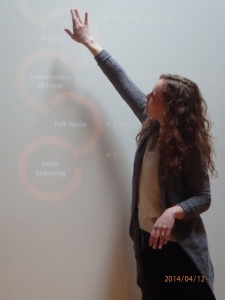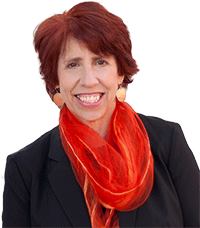 1st Annual RM-ADTA Conference 2014 Highlights
1st Annual RM-ADTA Conference 2014 Highlights
Shaping Local Connections:
Inspirations from Dance Movement Therapists In the Rocky Mountains
Naropa University, Paramita Campus
April 12, 2014, 8 ADTA CEU’s
Special thank you to our 2014 Keynote Speaker, Rae Johnson, PhD, RSW, RSMT!
Rae Johnson, PhD, RSW, RSMT is the former Chair of the Somatic Psychology Department at the Santa Barbara Graduate Institute, former Director of the Body Psychotherapy Program in the Somatic Counseling Psychology Department at Naropa University and the founding Coordinator of Student Crisis Response Programs at the University of Toronto. Their research and clinical interests include the somatic impact of oppression, embodied critical pedagogy, and feminist somatic research methods.
Body Stories: Researching and Performing the Embodied Experience of Oppression
How can we use embodied ways of knowing to think critically and respond authentically to issues of power, privilege, and difference? Can the body offer a resource to transform the impact of oppressive social relations and unconscious micro-aggression? Is sustained and comprehensive social justice possible without addressing the implicit domain of embodied inter-relationship? Drawing on critical theory, embodiment theory, and nonverbal communication research, Dr. Johnson presents the findings of her collaborative research on critical embodiment and considers the implications for psychotherapy practice, teaching and learning, and research methodology. At the center of this presentation is an interactive performance based on verbatim transcriptions of interviews with research participants who identify as oppressed across a range of social categories. The performance is designed to bring to life their embodied experiences and understandings, and will be performed by students in the Somatic Counseling Program at Naropa University: Nora Ahmed-Kamal, Erin Flynn, Masha Mikulinsky, Stefanie Raccuglia, Leah Raulerson, and Cynthia St. Clair.
Thank you to all of our 2014 Conference Presenters for sharing all your inspirational work!
Read below for brief descriptions of their presentations
 Lisa Bradley, MA, R-DMT
Lisa Bradley, MA, R-DMT
Elemental Movement Sculpting (EMS): An Embodied Dance/Movement Technique
In an experientially based presentation Lisa Bradley, MA, R-DMT will introduce her new, embodied dance/movement technique and choreographic tool, Elemental Movement Sculpting (EMS). EMS is designed to inspire inner authenticity to be expressed through dance/movement art, creating the experience of Embodied Dance. Focus for this presentation will be given to a brief dialog of Embodied Dance, an EMS practice format, and key principles of dance composition and therapeutic movement that EMS is based on such as: construction of form, improvisation, awareness of a felt sense, and inner listening. Benefits obtained by an EMS practice such as; a sense of embodiment, an increase in physical health, and a development of artistry in dance and movement are also covered.
 Melanie Smithson, MA, BC-DMT, LPC, CHt, Certified Sedona Method Coach
Melanie Smithson, MA, BC-DMT, LPC, CHt, Certified Sedona Method Coach
In this presentation, you will learn specific ways to use imaginative processes in your dance movement therapy practice. Drawing from Life Between Lives Spiritual Integration Hypnotherapy, Developmental Needs Meeting Strategy, EMDR, Play Therapy and Sedona Method Releasing you will be given a toolbox for using with clients who resist traditional dance movement therapy interventions.
Heather P. Kuhn, MA Student, Naropa University
Phases / Thresholds
This is a rare opportunity to investigate the chapters of your life, and what has made one stage distinctly different from another, a chance to reflect on the ways in which you are a child, a teenager, an adult, and an elder. Did you explode into this life, or come in gently? What is your relationship with your death? Come mindfully explore how you do transitions, and in particular, major life transitions.
Jill Leversee, MA Student of Somatic Counseling Psychology – DMT Concentration
Deb Silver, Certified Therapeutic Recreation Specialist, MA Student of Somatic Counseling Psychology – DMT Concentration
Process within the Professional World
How do we continue to show up authentically and allow for our individual selves to be present while working in a field that requires us to so constantly adapt to the needs of others? Join us in learning how tapping into our vulnerability and creativity supports us in bringing our own unique selves to our therapeutic, professional and personal relationships. Through an experiential-based workshop, gain a fresh perspective on and clarity towards your current professional process and explore it through the lense of your creative and vulnerable self.
Susan Schoon MC/MFCT, MS/ED, LAC, R-DMT
Yael Schweitzer LCSW, BC-DMT
Expanding movement repertoire with Creative Dance
This workshop presents collaboration between Dance /Movement Therapy and Creative Dance – the Mettler approach to dance improvisation. It demonstrates how a dance approach that is defined as an art form that satisfies our aesthetic sense can also provide effective principles to Dance/Movement Therapists in helping their clients expand movement repertoire.
Ashley Anderson, BS
Erin Anderson, BC-DMT, LPC, MA
Tony Edelblute, LPC, MT-BC
Michelle Fury, LPC, RYT
Heather Kennedy, MPH
Katherine Reed, LPC, ATR
DMT In the City: Integrating Creative Arts Therapy into the Psychiatric Care of Children and Adolescents: An In-Depth Look into a Creative Arts Therapy Program, DMT Interventions for Adolescents, and Evaluation/Research/Publication of Mood States in Adolescents
Through dynamic demonstrations and discussions, participants in this session will be able to: (1) Discern similarities and differences in how four creative arts modalities work with the same adolescent patient. (2) Describe and discuss four group DMT interventions that have been used with adolescents with a variety of psychiatric diagnoses. And, (3) Explain the research and evaluation methodology applied to understanding the impact of the creative arts therapy program with special emphasis on one Dance/Movement therapy research study.
